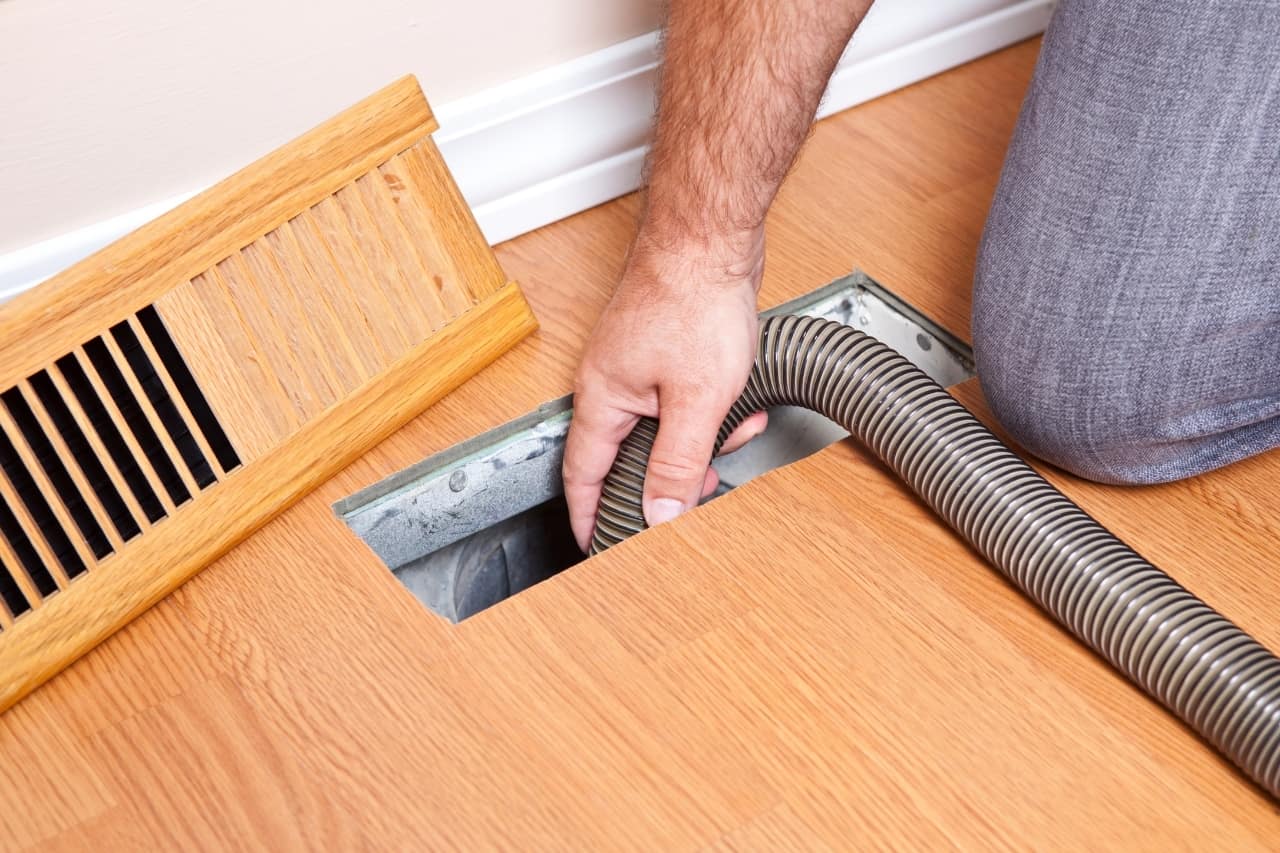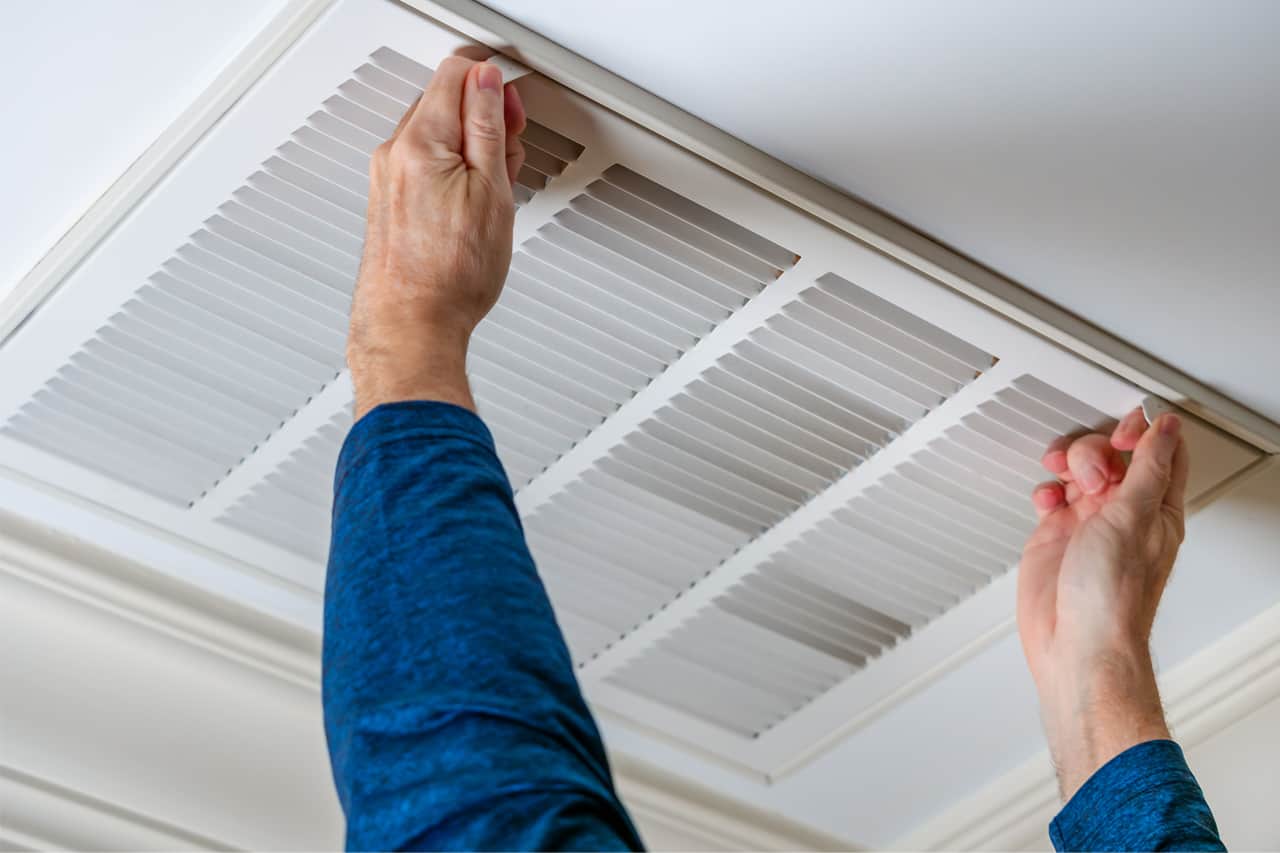How To Remove Odor From Air Ducts

homedude is reader-supported. When you buy through links on our site, We may earn an affiliate commission. Learn more
Let’s face it. Although air conditioning and heating systems are the holy grail when those harsh winters and sweltering summers roll around, there’s no denying that they can become a nuisance when they spread a musty odor throughout your home. Musty smells stem from your air duct for a wealth of reasons. In this guide, we’ll walk you through a few pointers of getting rid of this odor in your HVAC system.
If mysterious odors plague your home or workspace, the secret lies in cleaning your air ducts frequently and thoroughly. When it comes down to how to remove odor from air ducts, you need to find the source of the odor, clean the different air conditioning components, and follow through with any necessary repairs.
Read on for more detailed information on how to remove odor from air ducts.
What Kinds Of Odor Can Stem From Air Ducts?
The first course of action is to determine the cause of the odor and what it smells like, and the best way to get rid of it. Although there’s a boatload of possible odors that can stem from your air ducts, ask yourself what the smell mimics, for instance:
- Rotten eggs
- Rotting cabbage (rancid)
- Sulfur
- A freshly-struck matchstick
- Burning
- Moldy or musty odor (dirty socks, stale air, or smelly feet)
- Sewage
How To Clean Your Air Conditioning Unit
Cleaning your air conditioning unit is one of the most foolproof ways to get rid of the musty smell from your ductwork. Let’s dive into the usual issues impacting air conditioner units that cause unpleasant smells and how you can get a good handle on the situation.
1. Clean the Evaporator Coil

As the main component that cools your home or workplace, the evaporator is crucial to your AC unit. Therefore, when it gets dirty over time, it becomes the perfect environment for mold spores to grow and thrive. To clean it out, follow the steps below.
- Prepare a solution of 10% bleach water. It will get the job done of killing the mold without damaging the coil system. It’s worth noting that you must ensure you water down the bleach as it will corrode the metal, and that’s the last thing you need. Alternatively, you can opt for a standard coil cleaner that’s readily available in most hardware stores
- A central air unit typically contains a rear access panel. Take it off to expose the metal fins that sit right in front of the condenser coils
- Using the attachment brush and vacuum to suck up any loose debris or dirt from the coils and fins
- Use a fin comb or flathead screwdriver to straighten out the bent fins. You can easily find this tool at your local appliance store. Once you remove the fins, they’ll be held on with up to 8 hex screws
- Now spray the bleach solution onto the coils and wipe them down. Then, pull out the collection pan and wipe it down as well
- Once you reassemble the unit, you can test to see if the moldy odor is gone
2. Unclog the Condensate Drain Line

When excess condensation manifests on the evaporator coil, it plummets into a pan before making its way through a drain line. However, if the line is clogged, water will back up into the pan, further increasing mold growth.
If you notice a small pool of water around the interior of your AC unit coupled with a moldy smell, then this is the reason. Fortunately, you can solve the problem by using a dry or wet vacuum to unclog the drain line by sucking up the pool of water. Nonetheless, if the attempts prove futile, you’ll need to rope in a professional to get the job done.
3. Replace or Clean Your Air Filter

At times, your air filter can get overly clogged with debris that restricts airflow. As a result, moisture and dust can accumulate in the ductwork, serving as an ideal breeding ground for mold and bacteria.
Therefore, if you notice that your filter is dirty, that’s your cue to clean it. However, a filter replacement might be the best course of action if thorough vacuuming and wiping don’t get the job done.
4. Install Duct Filter Pads
If you notice that the odor isn’t stemming from the air conditioning unit, then there’s a chance it’s coming from other parts of the duct system. Nonetheless, it’s nearly impossible to get to the root cause without a snaking camera system.
The next best thing in an attempt to get rid of the odor is using duct filter pads that you’ll easily find in your local home improvement store. These hypoallergenic pads are designed to be a snug fit on different-sized horizontal and vertical air ducts. To get started:
- Unfasten your duct vent covers and position the filter pad into the grade.
- Fasten the cover back on and allow the filter to trap the offending particles.
5. Use Baking Soda

For instant relief, you can rely on the classic trick of pouring baking soda into a container and emptying it onto the smelly area. Likewise, once you pour it onto the duct, you’re good to go. However, this hack is only effective if the baking soda comes in contact with the offensive air particles. That implies finding a way to expose more surface area to the air for a better outcome.
6. Rely on an Exterminator

If you notice that the odor stemming from the ductwork mimics that of rotting garbage (rancid) rather than moldy, there’s a chance a dead carcass is lurking in your system. It’s quite common for small animals such as mice to chew through the ductwork and rely on them as avenues.
These small creatures tend to chew through ductwork and use them as avenues. In this scenario, your best bet would be to rope in an exterminator to handle the pest problem and dead critters in your air ducts.
7. Fix the Heater
Upon noticing a pungent burning odor stemming from your air ducts, first, confirm that nothing is on fire. Once you’ve eliminated fire as a possible cause of the smell, you’ll need to check your heater.
If you notice that the burning smell is most intense closest to the heater, then there’s a chance that the heater’s fan may have a problem. If the heater has mechanical problems, those can trigger friction with the fan when it’s in motion, resulting in the burning smell. Therefore, fixing the heater issue should naturally get rid of the burning odor.
8. Repair the Heater or Replace the Drywall
If you notice an odor of sulfur or a freshly-struck matchstick originating from your air ducts, there are two possible causes. For starters, failure of the components in the heater’s interior, for instance, the circuit board, in which case, fixing the heater should eliminate the odor.
The second likelihood is Chinese drywall. This refers to a batch of defective drywall that originated from China and was used to construct American homes between 2004 and 2007.
It’s believed that approximately 100,000 homes across 20 States are impacted by Chinese Drywall. In addition to health repercussions, it can cause an odor in your air ducts. Therefore, if your home is affected, replacing the drywall is a foolproof measure to take.
Conclusion
When it comes to dealing with a musty odor stemming from your air ducts, you’ll want to handle it sooner rather than later. With dust, animals, or mold, those unpleasant smells can jeopardize your health, and that’s the last thing you need.





